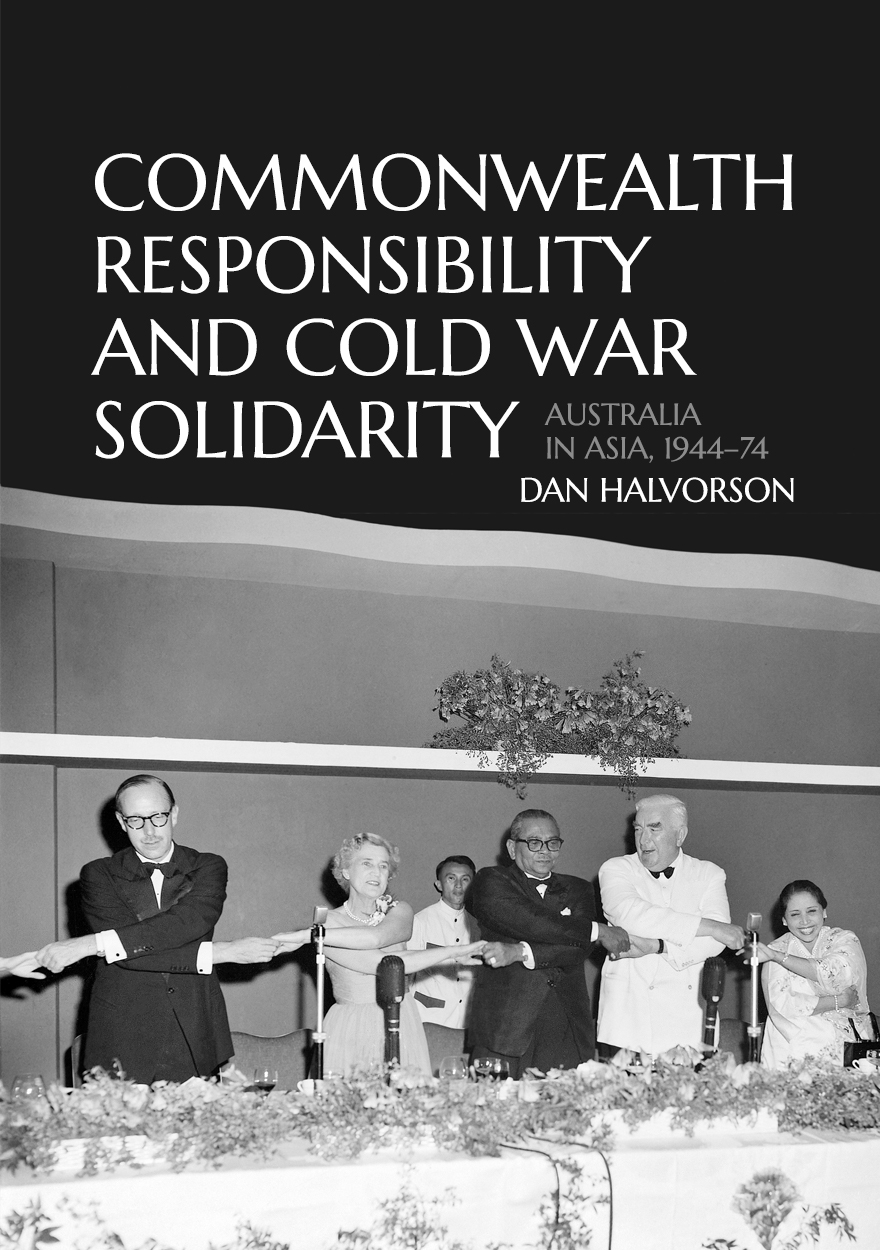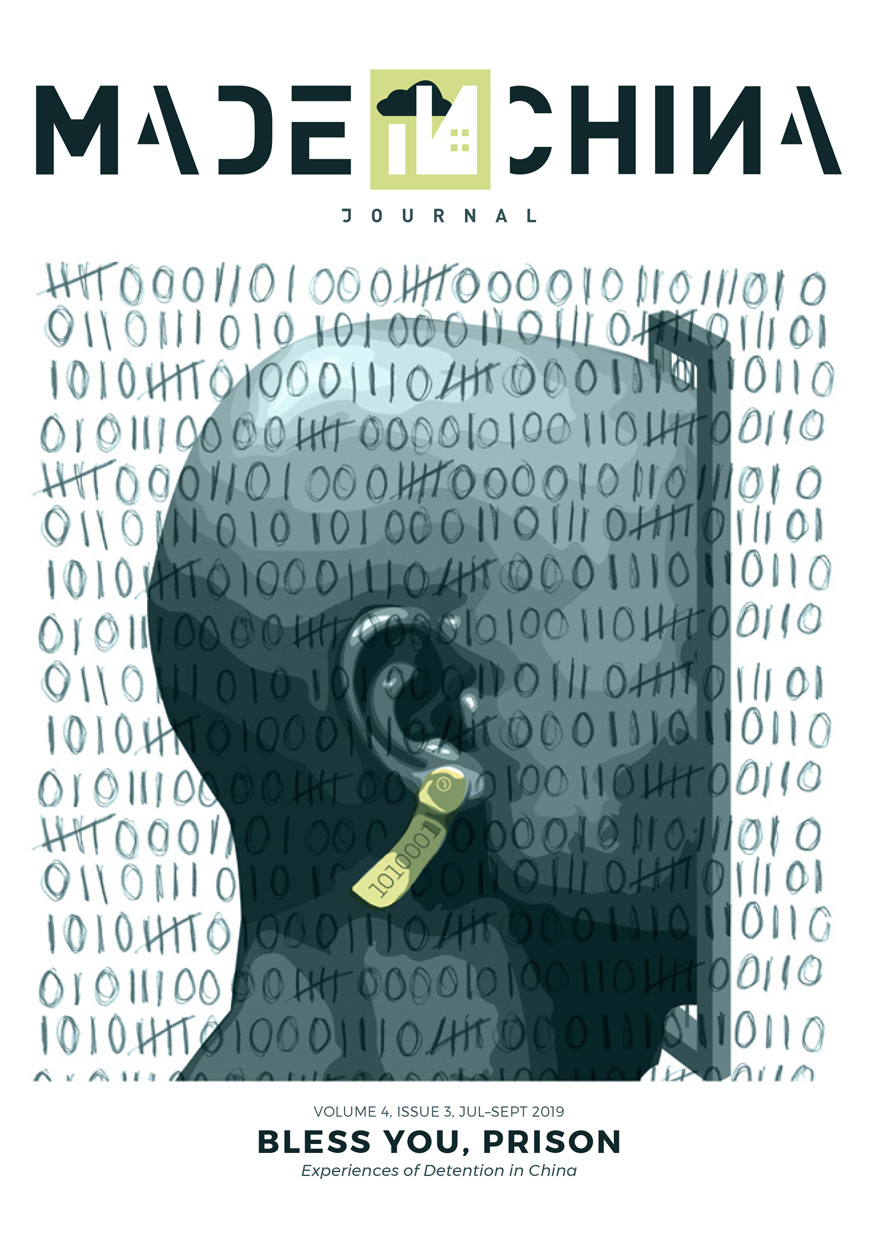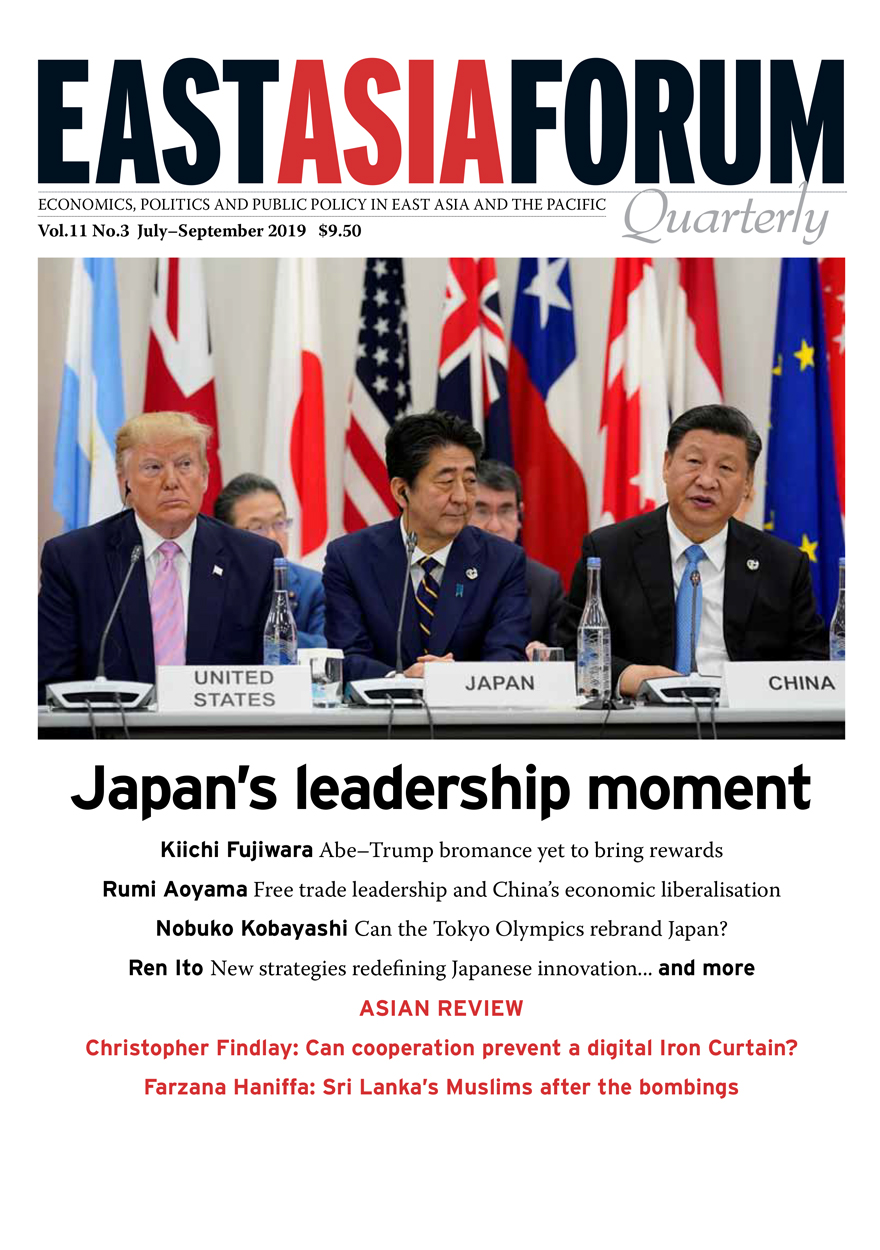Search titles
Displaying results 91 to 100 of 376.

Commonwealth Responsibility and Cold War Solidarity »
Australia in Asia, 1944–74
Authored by: Dan Halvorson
Publication date: November 2019
Australia’s engagement with Asia from 1944 until the late 1960s was based on a sense of responsibility to the United Kingdom and its Southeast Asian colonies as they navigated a turbulent independence into the British Commonwealth. The circumstances of the early Cold War decades also provided for a mutual sense of solidarity with the non‑communist states of East Asia, with which Australia mostly enjoyed close relationships. From 1967 into the early 1970s, however, Commonwealth Responsibility and Cold War Solidarity demonstrates that the framework for this deep Australian engagement with its region was progressively eroded by a series of compounding, external factors: the 1967 formation of ASEAN and its consolidation by the mid-1970s as the premier regional organisation surpassing the Asian and Pacific Council (ASPAC); Britain’s withdrawal from East of Suez; Washington’s de‑escalation and gradual withdrawal from Vietnam after March 1968; the 1969 Nixon doctrine that America’s Asia-Pacific allies must take up more of the burden of providing for their own security; and US rapprochement with China in 1972. The book shows that these profound changes marked the start of Australia’s political distancing from the region during the 1970s despite the intentions, efforts and policies of governments from Whitlam onwards to foster deeper engagement. By 1974, Australia had been pushed to the margins of the region, with its engagement premised on a broadening but shallower transactional basis.

International Review of Environmental History: Volume 5, Issue 2, 2019 »
Edited by: James Beattie
Publication date: November 2019
International Review of Environmental History takes an interdisciplinary and global approach to environmental history. It encourages scholars to think big and to tackle the challenges of writing environmental histories across different methodologies, nations, and time-scales. The journal embraces interdisciplinary, comparative and transnational methods, while still recognising the importance of locality in understanding these global processes.
The journal's goal is to be read across disciplines, not just within history. It publishes on all thematic and geographic topics of environmental history, but especially encourage articles with perspectives focused on or developed from the southern hemisphere and the ‘global south’.
Download for free
Not available for purchase

East Asia Forum Quarterly: Volume 11, Number 4, 2019 »
Publication date: November 2019
The idea that countries can pursue prosperity and security as separate streams of the national interest has passed. Economics and security have always been enmeshed, although we assumed otherwise. The nature of the relationship between the two is changing fast. The narratives that surround the change find it difficult to keep up with the facts.
The world has become more multipolar, with remarkable growth outside the established powers in the North Atlantic. And big countries—not just the United States and China, but other G20 members like Brazil, Turkey, Russia and the United Kingdom—have become more nationalist and brazen in asserting what they perceive to be their economic and security interests over those of others. The US–China relationship is increasingly characterised by strategic competition in both the economic and security domains.
At the same time, digital technology has not just transformed products, firms and markets, it has opened them to cyber disruption and attack, resulting in a cross-over of security into the economic and social domains.
This issue of the East Asia Forum Quarterly explores what is happening, why and how to respond to the change. These essays argue for careful thought and active engagement by governments, business and the broader community. Genuine dialogue and problem-solving between the economic and security parts of universities and government is a good first step to frame the problem broadly, keep perspective and find solutions.
East Asia Forum Quarterly grew out of East Asia Forum (EAF) online, which has developed a reputation for providing a platform for the best in Asian analysis, research and policy comment on the Asia Pacific region in world affairs. EAFQ aims to provide a further window onto research in the leading research institutes in Asia, and to provide expert comment on current developments within the region. East Asia Forum Quarterly, like East Asia Forum online, is an initiative of the East Asia Forum and its host organisation, the East Asian Bureau of Economic Research in the Crawford School of Economics and Government in the College of Asia & the Pacific at The Australian National University.
Download for free
Not available for purchase

Levelling Wind »
Remembering Fiji
Authored by: Brij V. Lal
Publication date: October 2019
‘What I have sought to do in my work is to give voiceless people a voice, place and purpose, the sense of dignity and inner strength that comes from never giving up no matter how difficult the circumstances. History belongs as much to the vanquished as to the victors.’
— Brij V. Lal
‘Professor Brij Lal is the finest historian of the Indian indentured experience and the Indian diaspora. His Girmitiyas is a classic.’
— Emeritus Professor Clem Seecharan, London Metropolitan University
‘Brij Lal is a highly respected, versatile and imaginative scholar who has made a lasting contribution to the historiography of the Pacific.’
— Dr Rod Alley, Victoria University of Wellington
‘Professor Brij Lal’s life is a remarkable journey of a scholar and an intellectual whose writings are truly transformative; a man of moral clarity and courage who also has deep pain at being cut off from his homeland.’
— Professor Michael Wesley, Dean of the College of Asia and the Pacific, The Australian National University
‘Brij Lal is a singular scholar, whose work has spanned disciplines – from history, political commentary, encyclopedia, biography and “faction”. Brij is without doubt the most eminent scholar in the humanities and social sciences Fiji has ever produced. He also remains one of the most significant public intellectuals of his country, despite having been banned from entering it in 2009.’
— Emeritus Professor Clive Moore, University of Queensland
‘Brij Lal is an accomplished and versatile historian and true son of Fiji. Above all, there is affirmation here of the enduring worth of good literature and the value of good education that Lal received and wants others to experience. The world needs more Lals who speak out against ruling opinions and dare to stray into the pastures of independent thought.’
— Professor Doug Munro, historian and biographer, Wellington, and Adjunct Professor at the University of Queensland

Made in China Journal: Volume 4, Issue 3, 2019 »
Edited by: Ivan Franceschini, Nicholas Loubere
Publication date: September 2019
Bless you prison, bless you for being in my life. For there, lying upon the rotting prison straw, I came to realise that the object of life is not prosperity as we are made to believe, but the maturity of the human soul.
— Alexandr I. Solzhenitsyn, The Gulag Archipelago (1918-1956)
With these words, Soviet star dissident Aleksandr Solzhenitsyn exalted the transformative role of the gulag—where he had been imprisoned for eight years—in reconfiguring his soul. Just like his account of life in the labour camps played a fundamental role in shaping public perceptions of the Soviet labour camps, our views of the Chinese detention system are also widely shaped by the writings and testimonies of former political prisoners, whether victims of the mass campaigns of the Mao era or more recent crackdowns against dissident voices. Reading these accounts, detention easily assumes the tragic connotations of martyrdom, and detainees come to be surrounded by a halo of heroism. But what about those uncountable prisoners who are detained for common crimes or less-noble causes? What about the reality of murderers, thieves, drug addicts, and prostitutes? Is prison a blessing for them too?
This issue of the Made in China Journal aims to provide a more balanced account of Chinese experiences of detention by examining situations as diverse as reeducation camps in Xinjiang, forced detox camps for drug addicts, involuntary hospitalisation of people with mental health problems, the contested legacies of labour camps from the Maoist past, and the latest reforms in the fields of Chinese criminal justice. Such grim analyses are also key to understanding the upheavals that are currently taking place in Hong Kong. We should not forget that the popular mobilisations of these past months began in response to attempts by the Hong Kong authorities to pass an extradition bill that would have established a new case-by-case model to transfer fugitives to any jurisdiction that the former British colony lacks a formal agreement with, including mainland China. Reading the accounts included in this issue of the journal, it is not difficult to understand why this became a flashpoint.
Download for free
Not available for purchase

Contested Terrain »
Reconceptualising Security in the Pacific
Authored by: Steven Ratuva
Publication date: September 2019
Contested Terrain provides a cutting-edge, comprehensive and innovative approach to critically analysing the multidimensional and contested nature of security narratives, justified by different ideological, political, cultural and economic rationales. This is important in a complex and ever-changing situation involving a dynamic interplay between local, regional and global factors. Security narratives are constructed in multiple ways and are used to frame our responses to the challenges and threats to our sense of safety, wellbeing, identity and survival but how the narratives are constructed is a matter of intellectual and political contestation. Using three case studies from the Pacific (Fiji, Tonga and Solomon Islands), Contested Terrain shows the different security challenges facing each country, which result from their unique historical, political and socio-cultural circumstances. Contrary to the view that the Pacific is a generic entity with common security issues, this book argues for more localised and nuanced approaches to security framing and analysis.

East Asia Forum Quarterly: Volume 11, Number 3, 2019 »
Publication date: August 2019
When Shinzo Abe was given a second chance at the Japanese prime ministership in 2012, Japan was in the throes of a period of intense domestic turmoil. After six prime ministers in six years, the nation was in desperate need of political stability. Abe has not only delivered that but is now set to become the longest-serving prime minister in modern Japanese history.
Abe commenced his second term with an ambitious policy program focused on reinvigorating the nation’s stagnant economy, amending the constitution to achieve a more ‘normal’ defence and security policy, and engaging proactively in regional and global affairs.
To what extent has Abe achieved these policy goals? How has he utilised the immense political capital accrued throughout his leadership tenure? And what will be the legacy that Abe leaves when his prime ministership ultimately comes to an end? In this issue of East Asia Forum Quarterly, scholars from both inside and outside Japan grapple with these questions.
East Asia Forum Quarterly grew out of East Asia Forum (EAF) online, which has developed a reputation for providing a platform for the best in Asian analysis, research and policy comment on the Asia Pacific region in world affairs. EAFQ aims to provide a further window onto research in the leading research institutes in Asia and to provide expert comment on current developments within the region. The East Asia Forum Quarterly, like East Asia Forum online, is an initiative of the East Asia Forum (EAF) and its host organisation, the East Asian Bureau of Economic Research (EABER) in the Crawford School of Economics and Government in the College of Asia & the Pacific at The Australian National University.
Download for free
Not available for purchase

Competing for Influence »
The Role of the Public Service in Better Government in Australia
Authored by: Barry Ferguson
Publication date: July 2019
Amidst growing dissatisfaction with the state of government performance and an erosion of trust in our political class, Competing for Influence asks: what sort of public service do we want in Australia?
Drawing on his experience in both the public and private sectors – and citing academic research across the fields of public sector management, industrial organisation, and corporate strategy – Barry Ferguson argues the case for the careful selection and application of private sector management concepts to the public service, both for their ability to strengthen the public service and inform public policy. These include competitive advantage, competitive positioning, horizontal strategy and organisational design, and innovation as an all-encompassing organisational adjustment mechanism to a changeable environment.
But these are not presented as a silver bullet, and Ferguson addresses other approaches to reform, including the need to rebuild the Public Sector Act, the need to reconsider the interface between political and administrative arms of government (and determine what is in the ‘public interest’), and the need for greater independence for the public service within a clarified role. This approach, and its implications for public sector reform, is contrasted with the straitjacket of path dependency that presently constricts the field.

The Chinese Economic Transformation »
Views from Young Economists
Edited by: Ligang Song, Yixiao Zhou, Luke Hurst
Publication date: July 2019
The Chinese Economic Transformation, the 19th volume in the China Update book series, provides an opportunity for young economists to share their views on various issues relating to the Chinese economic transformation. More than half of the contributors to this book are female scholars. Some of the contributors are rising stars in the studies of the Chinese economy and economic transition, and some only recently received their PhDs and are on their way to establishing themselves in the field of China studies. But they have one thing in common: to passionately observe, study and research what is going on in the Chinese economic transformation during the reform period; and, by so doing, make contributions to the policy debates on, and general understanding of, the Chinese economy.
The chapters in this volume include an in-depth probe into challenges in capital and credit allocation due to financial friction and policy distortions; investigating the causes of growth slow-down in China and suitable policy responses; the evolution of the household registration system and its impact on off-farm employment and the integration of rural and urban labour markets; the growth, scale and characteristics of nonstandard employment; the development of rural e-commerce and its economic impact; innovation performance of listed enterprises in China; financial services liberalisation and its impact on firms’ performance; financing support schemes for small and medium-sized enterprises (SMEs) and the effect on banks’ credit allocation to SMEs; the potential costs of US–China trade conflict and ways to mitigate them; gender income gap in China’s labour market; causes of blockage of Chinese overseas direct investment and strategies to reduce the probability of encountering obstacles; and the role of state capital in the iron ore boom in Australia.
The great variety of topics in this year’s Update allows readers to understand the current shape of the Chinese economy and to think deeply about policies and necessary reforms for future growth and development.

Made in China Journal: Volume 4, Issue 2, 2019 »
Publication date: June 2019
We shall sing the great masses shaken with work, pleasure, or rebellion: we shall sing the multicolored and polyphonic tidal waves of revolution in the modern metropolis; shall sing the vibrating nocturnal fervor of factories and shipyards burning under violent electrical moons; bloated railroad stations that devour smoking serpents; factories hanging from the sky by the twisting threads of spiraling smoke; bridges like gigantic gymnasts who span rivers, flashing at the sun with the gleam of a knife; adventurous steamships that scent the horizon, locomotives with their swollen chest, pawing the tracks like massive steel horses bridled with pipes, and the oscillating flight of airplanes, whose propeller flaps at the wind like a flag and seems to applaud like a delirious crowd.
— Filippo Tommaso Marinetti, The Manifesto of Futurism (1909, translated by R.W. Flint)
Although the smoking serpents of erstwhile have been replaced by the sinuous lines of aseptic high-speed trains, and steamships have long disappeared from the horizon, these words penned by an Italian poet at the beginning of the twentieth century are a surprisingly apt description of the infrastructural frenzy that has overcome China in recent history.
Rushing to catch up after the political turmoil of the twentieth century, over the past four decades the Chinese authorities have been remoulding the urban and rural landscapes in the service of economic growth. Starting from the township and village enterprises and special economic zones of the 1980s, factories have sprung up everywhere in China, boosting a new industrial revolution that has carried the country’s economic miracle well into this century. This was before the Party-state decided that it was time to launch a new green tidal wave of revolution in the now-postmodern metropolis, in an attempt to sever the pillars of spiralling smoke that used to link these plants to the sky (but in so doing, also forcing an entire working class to set their eyes to the ground).
New highways and high-speed railways now crisscross the country, enabling the great masses shaken with work, pleasure, and (little) rebellion to travel with an ease and a speed never experienced before. Bridges of unprecedented length span rivers and seas, bringing together places and people that do not always desire to be connected. If there is a place where the futurist utopia of the early twentieth century has come to fruition, it is China. It is to this infrastructural fever that we dedicate this issue of the Made in China Journal.
Download for free
Not available for purchase



